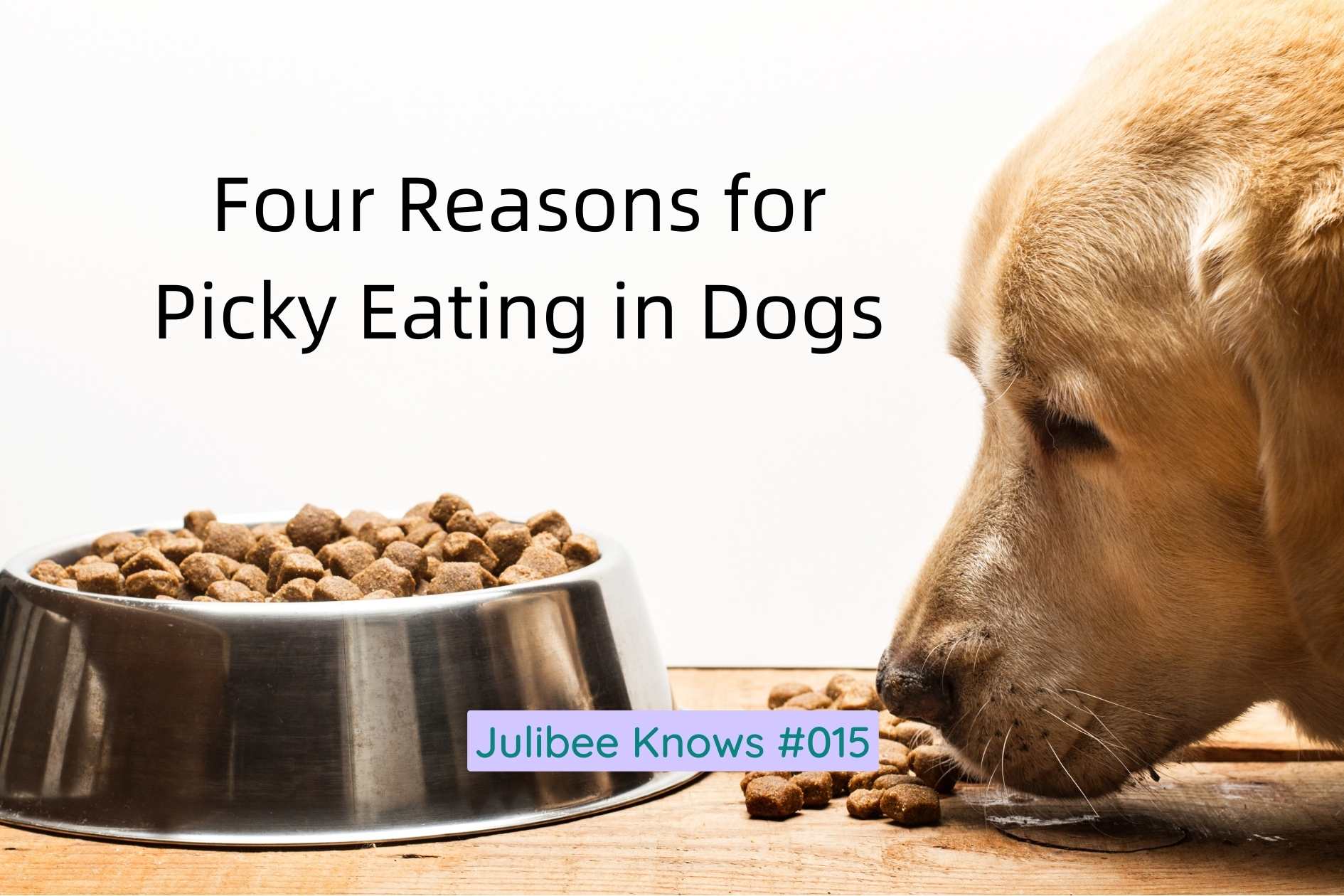
Four Reasons for Picky Eating in Dogs
Picky eating is an interesting phenomenon. While we often dislike it when children or dogs are picky eaters, we don't expect the same from ourselves, cats, or other animals. But what exactly is picky eating? Can we accept it? And when it comes to our dogs, we need to consider if the diet we provide them is appropriate from a physiological, psychological, and emotional perspective. In this blog, we will explore the four main reasons why dogs can be picky eaters and discuss potential solutions.
Reason 1: Limited Food Choices
Just like humans, dogs can get tired of eating the same food every day. After three years or more, they may be attracted to other tastier options. In this case, picky eating should not be considered a problem but rather a preference for better-tasting food. Dogs can eat a variety of foods, including dry kibble, freeze-dried or dehydrated food, canned food, and homemade meals consisting of meat, vegetables, bones, and treats. However, it's important to ensure that the food is of high quality and safe for dogs to consume.
Reason 2: Inappropriate Food Portions
Sometimes, dogs leave behind a significant amount of food, and this can be due to several factors. Firstly, the quantity of food provided may exceed their nutritional needs. It's generally recommended to feed dogs about 80% of the suggested amount on the packaging, considering their lower energy expenditure in urban environments. Additionally, if dogs receive extra treats or snacks throughout the day, the main meal portion should be adjusted accordingly. Overfeeding out of fear that the dog will go hungry can actually contribute to picky eating behavior. It's essential to find the right balance and consider the dog's age, digestive capabilities, activity level, and weight when determining the appropriate food quantity.

Reason 3: Lack of Enjoyment in Mealtime
Leaving food out all day can affect its freshness, leading to spoilage and loss of taste. Dogs may become disinterested in consuming food that has been sitting out for a long time. Moreover, a monotonous feeding routine without any engaging elements can result in a lack of appetite. To make mealtime more enjoyable, consider using interactive feeding tools such as puzzle toys, sniffing mats, or mentally stimulating toys. Varying the texture, temperature, and size of the food can also add novelty and excitement to their eating experience. However, it's important to choose feeding tools and techniques that are suitable for the individual dog, as overly challenging tasks can lead to frustration and aversion towards food.
Reason 4: Underlying Physical or Emotional Issues
Physical discomfort or pain can significantly impact a dog's appetite, eating speed, and food preferences. For example, dental issues like gum inflammation or dental calculus can cause chewing discomfort, leading dogs to favor softer foods and leave behind harder items. Similarly, neck pain can make swallowing difficult, resulting in a preference for softer textures. In these cases, it's crucial to address the underlying issues to alleviate the dog's discomfort and improve their eating experience. Additionally, emotional stress can also influence a dog's eating habits. Providing a comfortable and secure eating environment can help reduce stress and make mealtime more enjoyable.
The dog lacks mental and physical activity every day, and there is nothing to do at home. Going outside can also be challenging due to encountering many stimuli, making it unable to enjoy walks. With a slow metabolism and overall idleness, it naturally loses its appetite. It is a great choice to plan outdoor activities and find opportunities to take the dog to new places for exploration. Every time I take my dog camping, their digestive system becomes healthier than in the city because they need to be close to nature and engage in leisurely activities.
Conclusion
Understanding the reasons behind picky eating in dogs can help us address the issue effectively. By expanding their food choices, providing appropriate portions, enhancing mealtime enjoyment, and considering potential physical or emotional issues, we can help our dogs develop healthy eating habits. Remember, a balanced and nutritious diet tailored to their specific needs is essential for their overall well-being.

